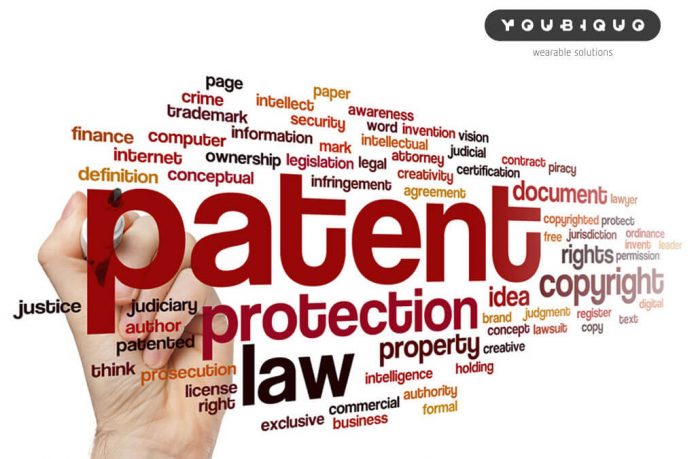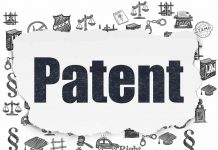This article is written by Vivek Maurya from ICFAI Law University, Dehradun. This article describes the incentives for innovation in the current stringent patent system and how the system can be improved.
Table of Contents
Introduction
A patent can cover innovation, which is a novel solution to technological difficulties. By guaranteeing that an inventor may direct the economic use of his creation, patent rules protect the rights of innovators whose inventions are truly remarkable and commercially successful.
A patent holder has the right to restrict others from producing, selling, retailing, or importing that technology. This opens up opportunities for inventors to sell, swap, or licence their patented inventions to those who wish to utilise them. The criteria that need to be met in order to obtain a patent are set out in National Intellectual Property policies and may vary from country to country. In general, obtaining a patent requires an inventor to demonstrate that their invention is novel, useful, and no longer obvious to someone working in the relevant sector. To do so, they must define how their technology works and what it is capable of.
Innovation and the patent system
One of the arguments for patents is that they encourage economic and technological development and encourage competition by creating a financial incentive for the invention in exchange for disclosure of the invention to the public. Despite the fact that the capacity of the patent system has been widely diagnosed within the context of dynamic innovation activities, a few critics have claimed that the current patent system hinders research and development (R&D) and technological progress.
Given the rapid pace of technological innovation as well as social and economic challenges, the function, value, and impact of the patent system must be constantly adjusted and implemented in order to strike an optimal balance between right holders, new market entrants, and the public to achieve great things. To encourage R&D in new technologies such as information and communication technologies and biotechnology, the patent system must be designed in such a way that it can adapt quickly and strategically to the difficulties posed by those new technologies. In addition, to support a broad and complex technological development, it is necessary to strengthen public R&D activities, including universities, and to promote better cooperation between the private and public sectors. It is important to establish policies that balance by offering both incentives to encourage R&D at the end of the value-added chain and ensuring a competitive environment for pioneers, downstream researchers and producers.
The transmission of technical knowledge is one of the primary objectives of the patent system. Patent information is a valuable and comprehensive source of technical, commercial, and legal information that can be used directly for scientific and experimental purposes, as well as a foundation for encouraging the adaptation and improvement of described technologies immediately following their publication in patent documents. Recognizing the significance of distributing technical knowledge, an increasing number of IP offices and organisations are providing access to their patent document library through the Internet.
How does a patent policy relate to incentives for innovation?
The following market failures plague the process of creating new ideas, information, and inventions:
- The production of inventions has the nature of a public good because of which markets cannot provide the right incentives for its production.
- Building knowledge and eventually bringing it to market can require both fixed and variable investment costs. For example, the large amount of R&D investment made by a drug company for an anti-cancer drug or the substantial amount of intelligence, time and money invested by a musician is a new and unique creation. To cover these costs, in most cases, the holder of the IPR is required to charge a higher price, since the marginal cost of providing one additional unit of the good, additional medicine or an additional copy of the music is higher than the average cost is quite low.
- The market’s failure is caused by the unpredictability of freshly produced intellectual property inherent in the good. It is the consumer’s business uncertainty about embracing innovative items on the market. The inventor is faced with this uncertainty, as well as pre-existing technical risk, in addition to how effectively the invention is supposed to work.
Since markets cannot always offer the proper incentives for innovators, governments provide patent rights to inventors. These legally protected rights provide the owner with the right to exclude any of those who may economically benefit from patent policies without the owner’s prior agreement for a certain period. This means that the owner has the legal authority to prevent others from commercially exploiting the underlying IP assets. As a result, patent rights assist inventors of all types of intangible knowledge and assets in gaining and maintaining a competitive advantage in the market by addressing the issue of appropriation of their return on investment. However, it is worth noting that they do not address the challenge of uncertainty, as payment for patent titles is a function of consumer’s hold on markets rather than a fixed upfront return.
Patents, as well as other forms of Intellectual Property Rights such as trademarks, utility models, design rights, and copyrights, provide such incentives. These additional intellectual property classifications may also be especially significant to supporting incremental improvements as well as innovations outside of manufacturing. Furthermore, creative ideas frequently necessitate technical advancement before they can be commercialised. Small businesses and individual entrepreneurs may lack the required technical competence and marketing platforms. Patent protection on an invention can enable the innovator to secure R&D funds from venture capitalists and build relationships with partners such as other large firms, research institutes, and universities. The owner of patent rights might have a strong bargaining position in creating partnerships such as joint ventures, strategic alliances, licencing agreements, mergers, or acquisitions to bring inventions to market. These collaborations, which are based on royalty sharing, licencing, and secrecy agreements, might be crucial for companies to effectively market their technologies. These factors indicate extra incentives that an inventor should consider before seeking IP protection.
However, for patents to generate incentives, there must be several conditions, most notably an organization of patent policies that confer legal quality. Drawbacks, such as difficulties in enforcing patent rights or the high cost to do so, would effectively make the patent system less attractive to firms and thus not an incentive. Uncertainty or protracted delays in registration processes can likewise discourage the use of the patent system.
Criteria for determining the patent system
These criteria, although the judgment is required, can be assessed empirically to varying degrees and tracked over time to observe significant changes. In most cases they relate to factors that are widely regarded as important:
First criterion
The patent system must accommodate new technologies. A system that grants developers of one technology temporary monopoly rights while providing no incentive to inventors of other technologies, including competing technologies, would be hostile to innovation in the long run.
Second criterion
Only those innovations that pass the statutory standards of originality and utility should be rewarded, which at the time were not obvious to those skilled in the respective technologies, and which appear adequate. In the most extreme scenario, where innovation is already known to the public or where the patent’s entire scope cannot be used in practice, there is nothing to be gained and much from potentially granting a monopoly, something has to be lost.
Third criterion
The patent system should fulfill its second function of dissemination of technical information. This implies that the description of patented innovations should be as full, clear, and accessible as feasible, and should be revealed in a reasonable period, without precluding the use of the patent or other technical literature.
Fourth criterion
The administrative and judicial decisions involved in the patent system must be timely, and the costs associated with them must be reasonable and proportionate. The protracted uncertainty about whether a patent is issued on an application or a patent challenged in an infringement dispute will be upheld or not infringed is not conducive to the investment required for innovation. In the same way, the high transaction costs of getting or defending a patent are likely to deter innovation. Such costs prolong the resolution of the issue, whether patent qualification or infringement, is delayed.
Fifth criterion
The availability of licences on reasonable terms is critical in scientific research and the development of complex or cumulative technologies, where an advance is based on one or more previous discoveries or inventions and full exploitation of the technology is beyond the capability of a single entity, the patented inventions are reasonably broad. Accessibility is important. Access depends on at least three factors:
- The scope of patent claims,
- The availability of licenses on reasonable terms, and
- The complexity of the patent landscape. Of course, the technology must first be built in for this to become an issue. Thus, access must be balanced against incentives to invent and disseminate technology.
Sixth criterion
The compatibility of the national patent system can promote trade and investment, and hence innovation, in an economy where a major percentage of its technology-intensive products is bought and sold abroad. There is a strong case to be made for integrating the patent systems of the United States, Europe, and Japan in order to minimise public and private transaction costs.
Seventh criterion
There should be a level playing field with intellectual property rights holders who are equally situated enjoying the same benefits while subject to the same obligations.
Evaluating patent system
The dangers of very weak patents
- Weak patent protection can lead to suboptimal innovation, since a private actor’s potential reward may be deemed insufficient for the time and resources invested in creating an invention.
- Because weaker rights make it more expensive to protect inventories, firms look inward to solve problems that might otherwise be solved more efficiently by an inter-firm partnership.
- Patents allow companies to examine the precise outcomes of future and present workers’ inventiveness and talents. Workers have a hard time determining their worth when their rights are limited.
The dangers of a patent that is too strong
- Extensive patent rights continually make innovative activities more expensive. Taking permission from all relevant patent holders increases the cost of innovation.
- Large corporations profit disproportionately from extremely strong patent rights. Unlike small and medium-sized businesses, which are more likely to utilise patents to increase income and improve their reputation, bigger businesses are more likely to use patents to improve their market position.
- When patent rights are strong, firms with intellectual property are encouraged to threaten other inventors with litigation.
Seeking a Goldilocks Approach
Incentives for innovation are reduced when intellectual property rights are either strong or too weak. Consider the Goldilocks Approach to strike the right balance:
- It is important to encourage follow-up innovation that can dramatically add value to pioneering inventions. However, the current system benefits those who do not research existing patents in this area for fear of litigation. The patent policy should protect inventors who seek to bypass existing patents should be protected, but those who willfully disregard earlier patents should be punished.
- Patents that are too broad or too vague are a barrier to progress, especially when it comes to software patents. The abundance of patents raises the risk of firms inadvertently infringing and hence raises the risk of patent litigation.
- Many patents held by companies and inventors are not exercised but are owned in case of potential infringement. This practice is useless and prevents patents from being put to their most efficient use. Dramatically raising the maintenance fee would ensure that the remaining, still maintained patents deserve the protection they are granted.
How can the existing stringent patent system be improved?
The following are the ways to ensure the vitality and to improve the functioning of the patent system:
- Keeping the patent system open-ended, unitary, and adaptable
The system must remain open to new technologies, and the characteristics allowing somewhat different treatment of different technologies must be preserved without formalizing different standards.
- Reviving the non-obvious standard
The requirement to qualify for a patent may not explain an invention to a person with normal skill in the art.
- Reducing discrepancies and inefficiencies in national patent systems
The US, Europe, and Japan should continue to unify patent examination methods and standards in order to eliminate redundancy in patent searches and examinations and eventually achieve mutual recognition of outcomes.
Conclusion
The high pace of innovation implies that the patent system is operating well and does not require major adjustments, but it is apparent that economic and legal developments are putting new strains on the system. Patents are being more actively sought and strictly enforced. The costs of obtaining a patent, promoting or securing the license of patented technology, and defending against allegations of infringement in court are increasing rapidly. Given these pressures, it’s a good moment to assess the system’s performance and explore how it might continue to rewire itself.
References
- https://www.wipo.int/ip-outreach/en/ipday/2017/innovation_and_intellectual_property.html
- https://www.kauffman.org/resources/entrepreneurship-policy-digest/how-intellectual-property-can-help-or-hinder-innovation/
- http://www.innovationpolicyplatform.org/www.innovationpolicyplatform.org/content/incentives-inventions/index.html
LawSikho has created a telegram group for exchanging legal knowledge, referrals, and various opportunities. You can click on this link and join:
https://t.me/joinchat/J_0YrBa4IBSHdpuTfQO_sA
Follow us on Instagram and subscribe to our YouTube channel for more amazing legal content.
 Serato DJ Crack 2025Serato DJ PRO Crack
Serato DJ Crack 2025Serato DJ PRO Crack











 Allow notifications
Allow notifications



